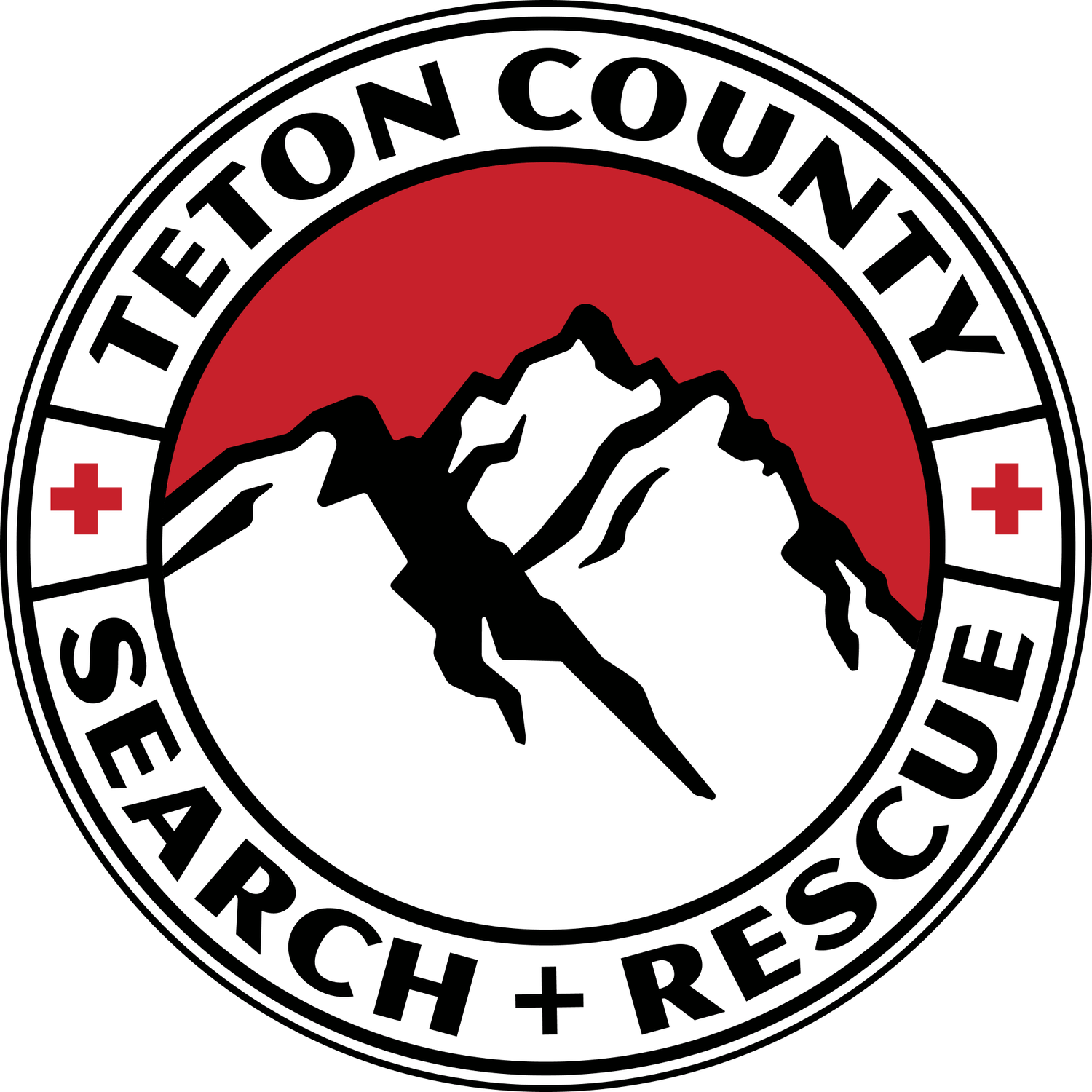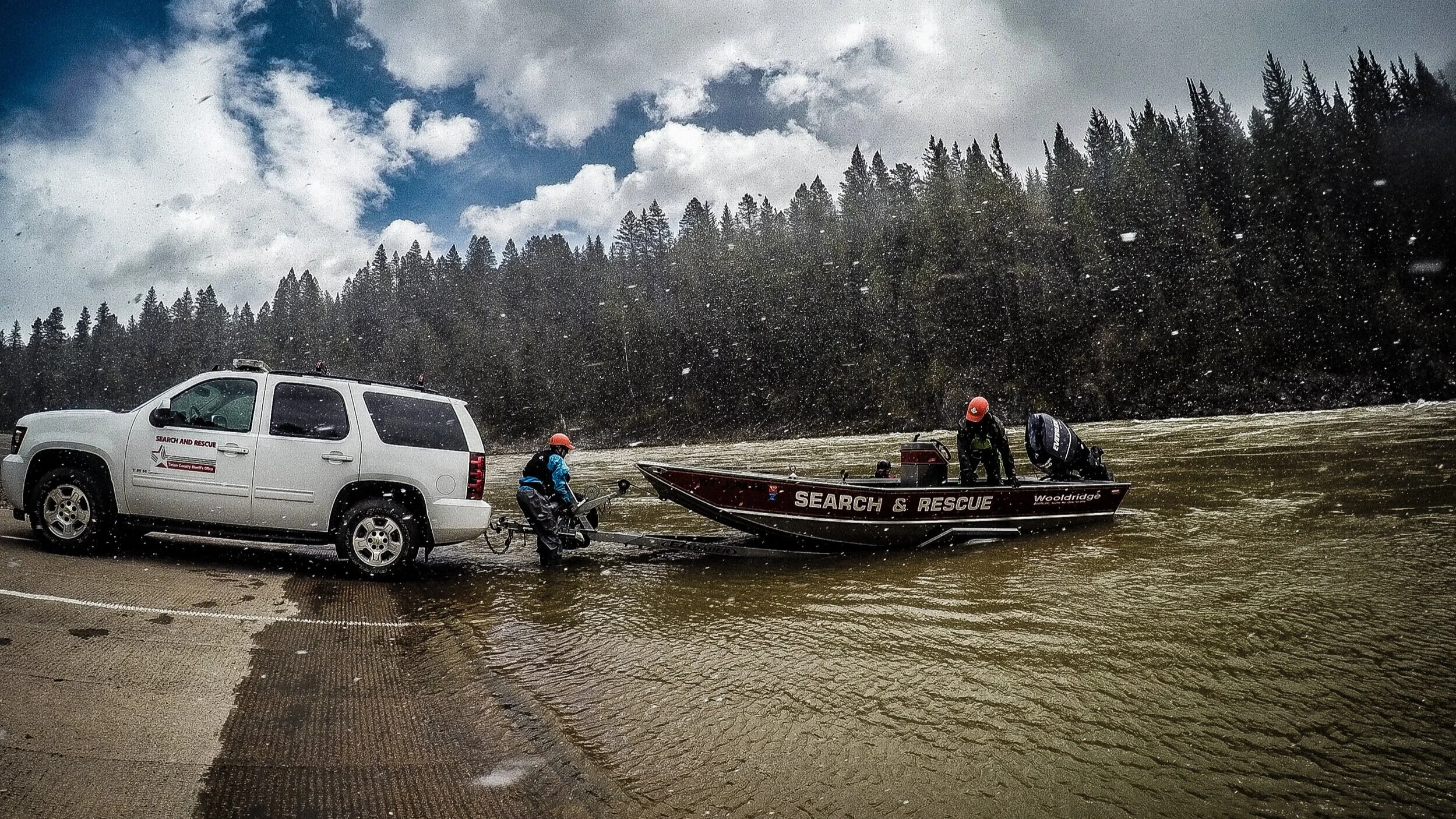At 7:32 p.m. on Friday, September 26, Teton County Dispatch received an emergency alert for a hunter having a medical issue in the North Fork of Horse Creek, a remote area that lies to the southeast of the Cache Creek drainage. The alert regarded a 66-year-old man from Oregon who was reported to be in severe distress.
The man was in a guided group of elk hunters. After dusk, the group had been hiking down a steep trail back to camp when the man could go no further.
Teton County Search & Rescue responded with two ground teams, each taking side-by-side vehicles up Cache Creek. When the vehicles could go no further, two volunteers continued on bikes. When the bikes could go no further, they continued on foot until they reached the patient about a mile past the divide between Cache Creek and Horse Creek. The second ground team came in on foot carrying the wheeled litter.
As the team treated the patient, they considered going down into Horse Creek, but opted to go back up to Cache Creek toward their vehicles and a potential landing site for an emergency helicopter. The team placed a request for an air ambulance out of Riverton but it was called off due to darkness and challenging terrain (the TCSAR ship was not available because it cannot fly at night).
The team then packaged the patient in the wheeled litter and transported him back up the divide and into Cache Creek. From there, they placed the man in one of the side-by-sides and drove him to the trailhead and waiting ambulance from Jackson Hole Fire/EMS.
The volunteers returned to TCSAR HQ at 2:30 a.m., and prepped the equipment for the next mission.




